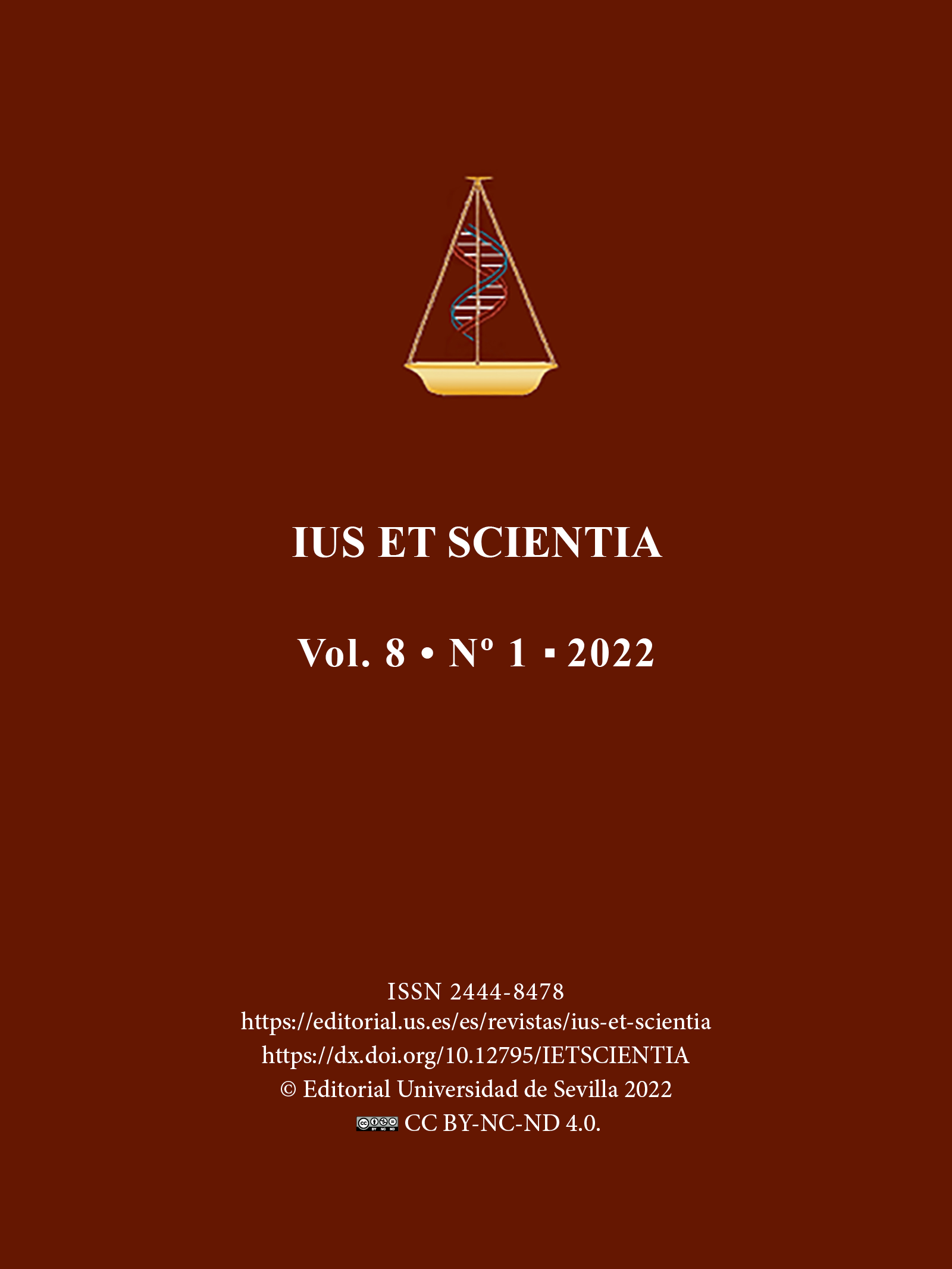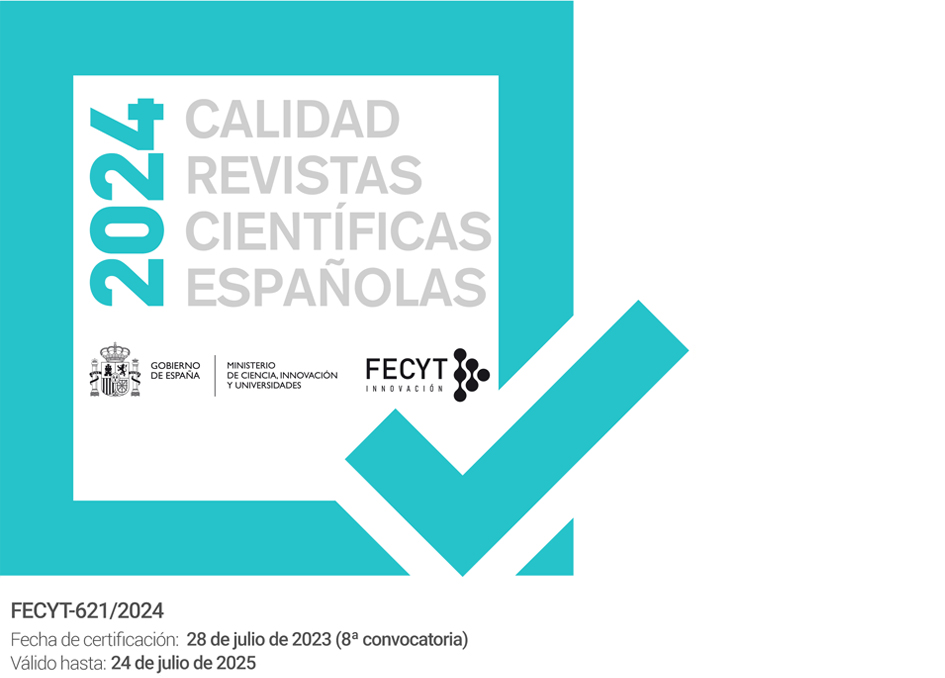El ‘hombre máquina’ y los nanorobots: la perspectiva de los derechos humanos y de la bioética
DOI:
https://doi.org/10.12795/IETSCIENTIA.2022.i01.05Palabras clave:
Nanorobots, Dignidad Humana, Identidad, Integridad física y psíquica, Derecho a gozar de los beneficios del progreso científico, Derecho a la salud, Hombre máquina, Posthumanismo, TranshumanismoResumen
La nanorobótica representa una de las fronteras más avanzadas y prometedoras del progreso tecnológico y científico. En particular, el empleo de los nanorobots en la medicina desvela, cada día más, su potencial para tratar enfermedades tan graves como difundidas, tales como las enfermedades hematológicas, neurodegenerativas y el cáncer. Al mismo tiempo, la capacidad de los nanorobots de modificar el cuerpo humano y sus funciones biológicas plantea cuestiones de carácter bioético y jurídico. El presente trabajo tiene como propósito analizar la compatibilidad del empleo de los nanorobots en la medicina con los principios bioéticos, especialmente la dignidad humana, y con el derecho a la identidad y a la integridad psíquica y mental del ser humano, incluso en el plan genético. Además, se teoriza que el empleo con fines terapéutico de los nanoborobots constituye un componente del derecho a la salud y del derecho a gozar de los beneficios del progreso científico.
Descargas
Citas
Anders, G. (2005). L’Uomo è antiquato, Vol. I: Considerazioni sull’anima nell’epoca della Seconda Rivoluzione Industriale. Bollati Boringhieri.
Andorno, R. (2002). Biomedicine and international human rights law: in search of a global consensus. Bulletin of the World Health Organization, 80, 959-963.
Andorno, R. (sin año). Dignidad humana (Jurídico). Enciclopedia de Bioderecho y Bioética. https://enciclopedia-bioderecho.com/voces/120
Andorno, R. (2007). Global bioethics at UNESCO: in defence of the Universal Declaration on Bioethics and Human Rights. Journal of Medical Ethics, 33(3), 150–154, 152.
Annas, G., Andrews, L. y Isasi, R. (2002). Protecting the endangered human: toward an international treaty prohibiting cloning and inheritable alterations. American Journal of Law and Medicine, 28(2-3), 151-178.
Bacon, F. (1627). The New Atlantis. No publisher given.
Bradley, A. C. (2018). DNA nanorobots — seek and destroy. Nature. https://www.nature.com/articles/nrc.2018.19
Clinic Cloud (sin año). Qué son los robots de ADN?. Recuperado el 28 de octubre de 2021, de https://clinic-cloud.com/blog/robots-de-adn/
Cozzi, P. (2021). Nanorobotica: cos’è, quali sono le sue applicazioni e le prospettive che apre. Tech4Future. Recuperado el 28 de octubre de 2021, de https://tech4future.info/nanorobotica-cose-applicazioni-prospettive/
Del Barrio Seoane, J. (sin año). Medicina individualizada (Técnico). Enciclopedia de Bioderecho y Bioética. https://enciclopedia-bioderecho.com/voces/212
Donders, Y. (2011). The right to enjoy the benefits of scientific progress: in search of state obligations in relation to health. Medicine, Health Care, and Philosophy, 14(4), 371–81.
Emanuel, E. J. y Grady, C. (2006). Four Paradigms of Clinical Research and Research Oversight. Cambridge Quarterly of Healthcare Ethics, 16, 82–96.
Emanuel, E. J., Wendler, D., Killen, J., Grady, C. (2004). What Makes Clinical Research in Developing Countries Ethical? The Benchmarks of Ethical Research. The Journal of Infectious Diseases, 189, 930–937.
Faralli, C. y Zulli, S. (2011). Terapia genica e diritti della persona. En S. Canestrari, G. Ferrando, C. M. Mazzoni, S. Rodotà y P. Zatti, Trattato di Biodiritto. Il Governo del Corpo, Tomo I (pp. 511-529). Giuffré Editore.
Faunce, T. A. (2005). Will international human rights subsume medical ethics? Intersections in the UNESCO Universal Bioethics Declaration. Journal of Medical Ethics, 31, 173–178.
García San José, D. I. (2012). Derecho de la Unión, Investigación embrionaria humana y patentes biológicas. Revista de Derecho Comunitario Europeo, 41, 175 ss.
García San José, D. I. (2013). European Normative Framework for Biomedical Research in Human Embryos. Editorial Aranzadi.
García San José, D. I. (2017). Crisis económica, vulnerabilidad multidimensional y cambio climático: la “tormenta perfecta” para el derecho a la salud en Europa. Bioderecho.es, Estudios de Vulnerabilidad, 5 (2017). https://revistas.um.es/bioderecho/article/view/290821
Gomes De Andrade, N. N. (2010). Human Genetic Manipulation and the Right to Identity: the Contradictions of Human Rights Law in Regulating the Human Genome. SCRIPTed, 7(3), 429-452
Harris, J. (2007). Enhancing evolution. The ethical case for making people better. Princeton University Press.
Hildebrand, F. B. (2003). Introduction to Numerical Analysis, Second Edition. Dover Publications Inc.
Hu, Y. (2021). Self-Assembly of DNA Molecules: Towards DNA Nanorobots for Biomedical Applications. Cyborg and Bionic Systems. https://spj.sciencemag.org/journals/cbsystems/2021/9807520/
Huxley, J. (1969). Religion without revelation. Signet.
de La Mettrie, J. O. (2014). L’homme machine. Nabu Press.
Li, S. et al. (2018). A DNA nanorobot functions as a cancer therapeutic in response to a molecular trigger in vivo. Nature. https://www.nature.com/articles/nbt.4071
Losada, C. (2021). ¿Cómo son los robots de ADN que pueden cambiar la medicina? La nanotecnología promete traer una revolución al sector médico tanto en eficacia como en costes. Cronica Directo. Recuperado el 28 de octubre de 2021, de https://cronicaglobal.elespanol.com/cronica-directo/curiosidades/robots-adn-cambiar-medicina_449082_102.html
Mancisidor, M. (2015a). Historia del Derecho Humano a la Ciencia. En N. Huhle, T. Huhle (Eds.), Die Subversive Kraft der Menchenrechte. Paulo Freire Verlag.
Mancisidor, M. (2015b). Is There Such a Thing as a Human Right to Science in International Law?. ESIL Reflections 4(1). https://esil-sedi.eu/wp-content/uploads/2015/04/Mancisidor-Reflection-Word.pdf
Morsink, J. (2011). The Universal Declaration of Human Rights: Origins, Drafting and Intent. University of Pennsylvania Press.
Neresini, F. (2011). Il nano-mondo che verrà. Verso la società nanotecnologica. Il Mulino.
NotizieScientifiche.it., (2020). Nanorobot autoassemblanti costruiti con molecole di DNA: non è fantascienza ma realtà. Recuperado el 28 de octubre de 2021, de https://notiziescientifiche.it/nanorobot-autoassemblanti-costruiti-con-molecole-di-dna-non-e-fantascienza-ma-realta/
Pocar, F. (1988). La Dichiarazione universale dei diritti dell’uomo, fonte di un nuovo diritto internazionale. Pace, diritti dell’uomo, diritti dei popoli, 2, 11-17.
Rodotà, S. (2012). Il diritto di avere diritti. Laterza.
Romano, C. P. R. y Boggio, A. (2018). Freedom of Research and the Right to Science: From Theory to Advocacy. En S. Giordano, J. Harris y L. Piccirillo (Eds.), The Freedom of Scientific Research: Bridging the Gap between Science and Society. Manchester University Press.
Rouvroy, A. (2011). Technology, virtuality and utopia: governmentality in an age of autonomic computing. Routledge.
Russel, B. (2015). The Scientific Outlook, Routledge.
Scott, R. y Wilkinson, S. (2017). Germline Genetic Modification and Identity: the Mitochondrial and Nuclear Genomes. Oxford Journal of Legal Studies, 37(4), (2017), 886–915.
UNSW Sidney – Newsroom (2020). DNA nanobots build themselves – how can we help them grow the right way?. Recuperado el 28 de octubre de 2021, de https://newsroom.unsw.edu.au/news/health/dna-nanobots-build-themselves-%E2%80%93-how-can-we-help-them-grow-right-way
Fuentes normativas
Council of Europe, Convention for the protection of Human Rights and Dignity of the Human Being with regard to the Application of Biology and Medicine: Convention on Human Rights and Biomedicine (adopted in Oviedo, 4 April 1997, entered into force 1 December 1999) ETS No. 164.
UN Committee on Economic, Social and Cultural Rights (CESCR), General Comment No. 14: The Right to the Highest Attainable Standard of Health (Art. 12 of the Covenant), 11 August 2000, E/C.12/2000/4.
UN Committee on Economic, Social and Cultural Rights, General comment No. 22 (2016) on the right to sexual and reproductive health (article 12 of the International Covenant on Economic, Social and Cultural Rights), 2 May 2016, E/C.12/GC/22.
UN Committee on Economic, Social and Cultural Rights (CESCR), General comment No. 25 (2020) on science and economic, social and cultural rights (article 15 (1) (b), (2), (3) and (4) of the International Covenant on Economic, Social and Cultural Rights), Adopted at the Sixty-seventh Session of the Committee on Economic, Social and Cultural Rights, on 30 April 2020 (Contained in Document E/C.12/GC/25).
Report of the Special Rapporteur in the field of cultural rights, Farida Shaheed, on the right to enjoy the benefits of scientific progress and its applications (A/HRC/20/26, 2012).
UNESCO, Venice Statement on the Right to Enjoy the Benefits of Scientific Progress and Its Applications, (2009). http://unesdoc.unesco.org/images/0018/001855/185558e.pdf
United Nations, Human Rights Council, Tenth Session, Resolution 10/23. Independent expert in the field of cultural rights. https://ap.ohchr.org/documents/E/HRC/resolutions/A_HRC_RES_10_23.pdf
Publicado
Cómo citar
Número
Sección
Licencia
Derechos de autor 2022 Simona Fanni

Esta obra está bajo una licencia internacional Creative Commons Atribución-NoComercial-CompartirIgual 4.0.
Aquellos autores/as que tengan publicaciones con esta revista, aceptan los términos siguientes:- Los autores/as conservarán sus derechos de autor y garantizarán a la revista el derecho de primera publicación de su obra, el cuál estará simultáneamente sujeto a la Licencia de reconocimiento de Creative Commons que permite a terceros compartir la obra siempre que se indique su autor y su primera publicación esta revista.
- Los autores/as podrán adoptar otros acuerdos de licencia no exclusiva de distribución de la versión de la obra publicada (p. ej.: depositarla en un archivo telemático institucional o publicarla en un volumen monográfico) siempre que se indique la publicación inicial en esta revista.
- Se permite y recomienda a los autores/as difundir su obra a través de Internet (p. ej.: en archivos telemáticos institucionales o en su página web) antes y durante el proceso de envío, lo cual puede producir intercambios interesantes y aumentar las citas de la obra publicada. (Véase El efecto del acceso abierto).




